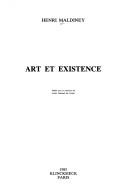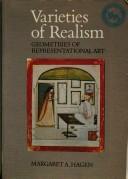| Listing 1 - 10 of 46 | << page >> |
Sort by
|
Book
ISBN: 0714815500 9780714815503 Year: 1972 Publisher: London Phaidon
Abstract | Keywords | Export | Availability | Bookmark
 Loading...
Loading...Choose an application
- Reference Manager
- EndNote
- RefWorks (Direct export to RefWorks)
Art --- Psychology --- Psychology. --- Art - Psychology

ISBN: 0822311232 Year: 1992 Publisher: Durham Duke University Press
Abstract | Keywords | Export | Availability | Bookmark
 Loading...
Loading...Choose an application
- Reference Manager
- EndNote
- RefWorks (Direct export to RefWorks)
Book
ISBN: 9780190928216 0190928220 0190928212 0197601138 Year: 2021 Publisher: Oxford Oxford university press
Abstract | Keywords | Export | Availability | Bookmark
 Loading...
Loading...Choose an application
- Reference Manager
- EndNote
- RefWorks (Direct export to RefWorks)
"Works of art sometimes leave us speechless. But they almost never shut us up. They can't. There's just too much to say. Talking about art doesn't leave things as they are; it changes everything. To look, to think, to say what you see, or why you respond as you do, this changes what you see and it changes your response. The effort and the caring remake us. They remake us, in real time, as we listen to the song, or examine the painting, or watch the movie. This is not unique to art, of course. What I have just outlined goes for all experience and is really life's first principle: life is a process of growth and reorganization, a process that commences right then when we first act, for we reorganize ourselves and develop in response to the ways what we do changes what we undergo, as Dewey might have said. But art aims at this; there is art so that we may remake ourselves, and also, so that we may catch ourselves in the act of this remaking. Art requires creation, even from its beholder. Yogi Berra was right: you can see a lot by observing. But observation - the effort and the caring - this requires thought, attention, focus. It can be play, but it is also work-like. Art always proposes a task, and the task is neither easy nor quite well-enough defined. The task, though, is only this: try to perceive, try to bring what is there into focus. If you do this, you will find yourself unveiled and, to whatever little extent, put together anew. The crucial thing to accept is that we don't get all this - the wow, the pleasure, the unveiling, and the reorganization - just for the price of admission. We have to join in, turn on, throw thoughts and reactions at the works themselves, position ourselves to catch them on the rebound, and allow room for emotions, not always positive. This is something we typically do with other people, and in the field cast by their responses and their words and argument. Works of art are always strange provocations; sometimes they offend us; more often they leave us untouched, unaffected, even bored. And this is where their value lies. Each of the short writings collected here is an exercise in giving art and myself the time to let something happen; I try to do this work so that art may do its work. Some of them were written while I was working on my 2015 book Strange Tools: Art and Human Nature, and they flow from the same well of curiosity that nourished that project. The title is borrowed from Joshua C Taylor's famous Learning To Look, which was the first book about art that I ever read"--
Art - Psychology --- Art appreciation --- Art criticism --- Arts

ISBN: 0892262044 0892262052 9780892262045 9780892262052 Year: 1999 Publisher: Lexington : Icus,
Abstract | Keywords | Export | Availability | Bookmark
 Loading...
Loading...Choose an application
- Reference Manager
- EndNote
- RefWorks (Direct export to RefWorks)
Aesthetics. --- Art --- Human behavior. --- Behavior evolution. --- Psychology. --- Art - Psychology.
Book
ISBN: 9004400532 9004400230 9789004400238 Year: 2019 Publisher: Leiden ; Boston : Brill,
Abstract | Keywords | Export | Availability | Bookmark
 Loading...
Loading...Choose an application
- Reference Manager
- EndNote
- RefWorks (Direct export to RefWorks)
In recent decades, art historians and critics have occasionally emphasized a dynamic, embodied mode of looking, accenting the role of the viewer and the complex interplay between beholders and works of art. In The Place of the Viewer , Kerr Houston shows that an attention to the position and physical experiences of beholders has in fact long informed art historical analyses – and that close study of the theme can lead to a fuller understanding of the discipline, the act of viewership and individual works of art. Simultaneously attentive to historical ideas and contemporary scholarship, this book identifies a vein of thought that has been generally overlooked, and proposes new ways of seeing familiar works and traditions.
Art --- Art criticism --- Psychology. --- History. --- Art - Psychology. --- Art criticism - History.

ISBN: 2865631060 9782865631063 Year: 1985 Volume: 46 Publisher: Paris : Klincksieck,
Abstract | Keywords | Export | Availability | Bookmark
 Loading...
Loading...Choose an application
- Reference Manager
- EndNote
- RefWorks (Direct export to RefWorks)
Art --- Aesthetics --- Philosophy. --- Psychology. --- Philosophie --- Psychologie --- Esthetica. --- Kunst. --- Art - Philosophy. --- Art - Psychology.

ISBN: 0521253136 0521313295 Year: 1986 Publisher: Cambridge New York Sydney Cambridge University Press
Abstract | Keywords | Export | Availability | Bookmark
 Loading...
Loading...Choose an application
- Reference Manager
- EndNote
- RefWorks (Direct export to RefWorks)
Art --- Geometry --- Psychology --- Kunst. Psychologie. --- Perception visuelle. --- Art. Psychologie. --- Visual perception. --- Art - Psychology. --- Geometry. --- Visuele waarneming.
Book
Year: 1969 Publisher: Amsterdam : Excerpta Medica Foundation,
Abstract | Keywords | Export | Availability | Bookmark
 Loading...
Loading...Choose an application
- Reference Manager
- EndNote
- RefWorks (Direct export to RefWorks)
20.08 art psychology. --- 44.91 psychiatry, psychopathology. --- Arts. --- Mentally disturbed.
Book
ISBN: 0674729226 Year: 2013 Publisher: Cambridge, MA : Harvard University Press,
Abstract | Keywords | Export | Availability | Bookmark
 Loading...
Loading...Choose an application
- Reference Manager
- EndNote
- RefWorks (Direct export to RefWorks)
The Collective Dream in Art is a pioneer work in the synthesis of art interpretation. Believing that no existing interpretive approach to art is in itself the whole answer to understanding a work of art, Professor Abell has attempted to correlate the various critical approaches to visual art and the methods and points of view used by specialists in the fields of the social sciences, humanities, and psychology and psychoanalysis. The result is a single integrated theory and method which is applicable and valid for all artistic creation.In Part I, Professor Abell examines the pros and cons of various approaches to cultural expression; he concentrates on the psychoanalytical approach of Freud and his followers and of other psychoanalysts and on the ideas of the materialist schools of historiography. From them he welds a new framework of interpretation, which he calls the psycho-historical theory. He tests and applies it in Part II to the culture of the 11th, 12th, and 13th centuries in Western Europe, and reaches some new conclusions about the meanings of some common medieval motifs. Part III contains pertinent essays on the implications of the psycho-historical theory for the history of art, the role of the artist, and the relationship of artistic expression to society.
Art - Psychologie. --- Civilisation - Histoire. --- Civilisation - Philosophie. --- Civilization. --- Cultuur. --- Geschichte. --- Kunst. --- Art -- Psychology. --- Civilization -- Philosophy.
Book
ISBN: 2070247198 2072403480 9782070247196 Year: 1983 Volume: 224 Publisher: [Paris] : Gallimard,
Abstract | Keywords | Export | Availability | Bookmark
 Loading...
Loading...Choose an application
- Reference Manager
- EndNote
- RefWorks (Direct export to RefWorks)
Cet ouvrage fait le point sur la modernité et l'avant-garde. L'abstraction imposé après 1945 aux pays occidentaux n'est que la figure inverse de l'art d'Etat que le réalisme socialiste a imposé aux pays socialistes. Ceci a entraîné une crise des modèles.
Aesthetics of art --- Modernism (Art) --- Art --- Modernisme (Art) --- Psychology --- Psychologie --- Analyse de l'art --- Modernité --- Art - Psychology
| Listing 1 - 10 of 46 | << page >> |
Sort by
|

 Search
Search Feedback
Feedback About
About Help
Help News
News